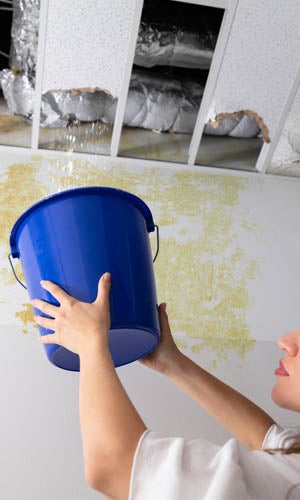6 Ways to Find Concealed Water Leakages in Your Residence
6 Ways to Find Concealed Water Leakages in Your Residence
Blog Article
The publisher is making a number of great pointers on the subject of Finding hidden leaks overall in the content further down.

Early detection of dripping water lines can mitigate a prospective calamity. Some tiny water leaks might not be noticeable.
1. Take A Look At the Water Meter
Every house has a water meter. Checking it is a guaranteed manner in which assists you find leakages. For beginners, switch off all the water sources. Guarantee no one will purge, utilize the faucet, shower, run the cleaning equipment or dishwasher. From there, go to the meter and also watch if it will certainly alter. Given that no one is utilizing it, there should be no activities. If it moves, that suggests a fast-moving leakage. If you detect no modifications, wait an hour or 2 and inspect back once more. This indicates you might have a slow-moving leak that can also be underground.
2. Check Water Consumption
If you identify unexpected adjustments, despite your usage being the same, it suggests that you have leakages in your plumbing system. An abrupt spike in your expense suggests a fast-moving leakage.
On the other hand, a constant boost on a monthly basis, despite having the same practices, reveals you have a slow-moving leakage that's additionally slowly intensifying. Call a plumber to extensively check your residential or commercial property, especially if you really feel a cozy location on your flooring with piping beneath.
3. Do a Food Coloring Examination
When it comes to water intake, 30% comes from bathrooms. If the shade in some way infiltrates your bowl throughout that time without flushing, there's a leakage between the container and also dish.
4. Asses Exterior Lines
Don't forget to inspect your outdoor water lines too. Ought to water seep out of the connection, you have a loosened rubber gasket. One tiny leakage can squander tons of water and also spike your water costs.
5. Analyze the situation as well as check
Homeowners should make it a behavior to inspect under the sink counters and even inside closets for any type of bad odor or mold and mildew growth. These two warnings indicate a leakage so timely interest is needed. Doing regular examinations, even bi-annually, can save you from a significant problem.
If you know your home is currently old, maintain a careful eye on your heating units, hose pipes, pipelines and so on. Check for stainings and weakening as most appliances and also pipes have a life span. They will additionally naturally weaken as a result of wear and tear. Do not wait for it to intensify if you presume leaking water lines in your plumbing system. Call a specialist plumber today so you don't wind up with a horrible mess in your home.
Early discovery of dripping water lines can reduce a potential disaster. Some little water leaks may not be visible. Inspecting it is a proven means that assists you discover leaks. One tiny leak can waste loads of water and spike your water expense.
If you presume leaking water lines in your plumbing system, do not wait for it to escalate.
WARNING SIGNS OF WATER LEAKAGE BEHIND THE WALL
PERSISTENT MUSTY ODORS
As water slowly drips from a leaky pipe inside the wall, flooring and sheetrock stay damp and develop an odor similar to wet cardboard. It generates a musty smell that can help you find hidden leaks.
MOLD IN UNUSUAL AREAS
Mold usually grows in wet areas like kitchens, baths and laundry rooms. If you spot the stuff on walls or baseboards in other rooms of the house, it’s a good indicator of undetected water leaks.
STAINS THAT GROW
When mold thrives around a leaky pipe, it sometimes takes hold on the inside surface of the affected wall. A growing stain on otherwise clean sheetrock is often your sign of a hidden plumbing problem.
PEELING OR BUBBLING WALLPAPER / PAINT
This clue is easy to miss in rooms that don’t get much use. When you see wallpaper separating along seams or paint bubbling or flaking off the wall, blame sheetrock that stays wet because of an undetected leak.
BUCKLED CEILINGS AND STAINED FLOORS
If ceilings or floors in bathrooms, kitchens or laundry areas develop structural problems, don’t rule out constant damp inside the walls. Wet sheetrock can affect adjacent framing, flooring and ceilings.
https://www.servicemasterbyzaba.com/blog/how-to-detect-water-leakage-in-walls/
.jpg)
Hopefully you liked our post on Detecting hidden plumbing leaks. Thanks a lot for taking time to read our piece. For those who appreciated our post kindly make sure you remember to pass it around. I thank you for reading our article about Finding hidden leaks.
Report this page